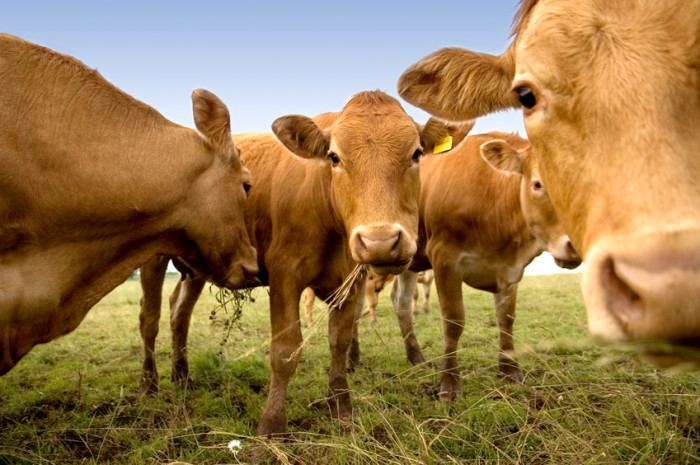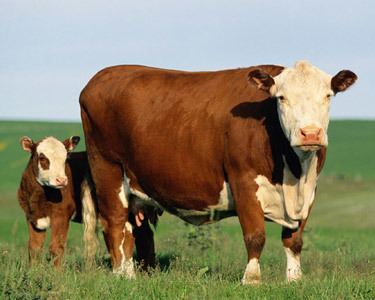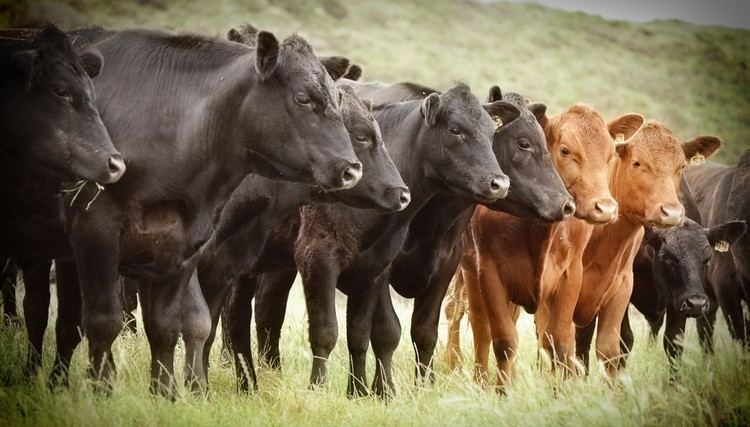 | ||
Breeds | ||
Vetsoncall beef cattle feedlot commits to animal comfort
Beef cattle are cattle raised for meat production (as distinguished from dairy cattle, used for milk production). The meat of adult cattle is known as beef. There are three main stages in beef production: cow-calf operations, backgrounding, and feedlot operations. When raised in a feedlot, cattle are known as feeder cattle. Many such feeder cattle are born in cow-calf operations specifically designed to produce beef calves. While the principal use of beef cattle is meat production, other uses include leather, and products used in shampoo and cosmetics.
Contents
- Vetsoncall beef cattle feedlot commits to animal comfort
- Determining the market readiness of beef cattle
- Breeding and calving
- Cattle maintenance
- Cattle processing
- References

Determining the market readiness of beef cattle
Breeding and calving

Besides breeding to meet the demand for beef production, owners also use selective breeding to attain specific traits in their beef cattle. An example of a desired trait could be leaner meat or resistance to illness. Breeds known as dual-purpose breeds are also used for beef production. These breeds have been selected for two purposes at once, such as for both beef and dairy production, or both beef and draught. Dual-purpose breeds include the Brown Swiss and many of the Zebu breeds of India such as Tharparkar and Ongole Cattle. The original Shorthorn was also a dual-purpose breed, but it diverged into two groups through selective breeding.

Most beef cattle are mated naturally, whereby a bull is released into a cowherd approximately six weeks after calving period. However, beef cattle can also be bred through artificial insemination. Cattle are normally bred during the summer so that calving may occur the following spring. However, cattle breeding can occur at other times of year, such as late summer to early fall. Owners can select the breeding time based on a number of factors, including reproductive performance and seasonal cattle pricing.
Cattle maintenance
Cattle handlers are expected to maintain a low stress environment for their herds, involving constant safety, health, comfort, nourishment and humane handling. According to the Canadian National Farm Animal Care Council, beef cattle must have access to shelter from extreme weather, safe handling and equipment, veterinary care and humane slaughter. If an animal is infected or suspected to have an illness, its owners are to report it immediately to a practicing veterinarian for either treatment or euthanasia. Due to the density of herd populations, illnesses can spread very quickly between cattle. Owners are expected to monitor their cattle's condition regularly for early detection and treatment, as cattle illness can threaten both cattle and human health as witnessed with Mad cow disease. On average, cattle will consume 1.4 to 4% of their body weight daily. Cattle weighing 1000 lbs. will drink an average of 41 L a day, and approximately 82 L in hot weather.
Cattle processing
A steer that weighs 1,000 lb (450 kg) when alive will make a carcass weighing about 615 lb (280 kg), once the blood, head, feet, skin, offal and guts have been removed. The carcass will then be hung in a cold room for between one and four weeks, during which time it loses some weight as water dries from the meat. When boned and cut by a butcher or packing house this carcass would then make about 430 lb (200 kg) of beef.
